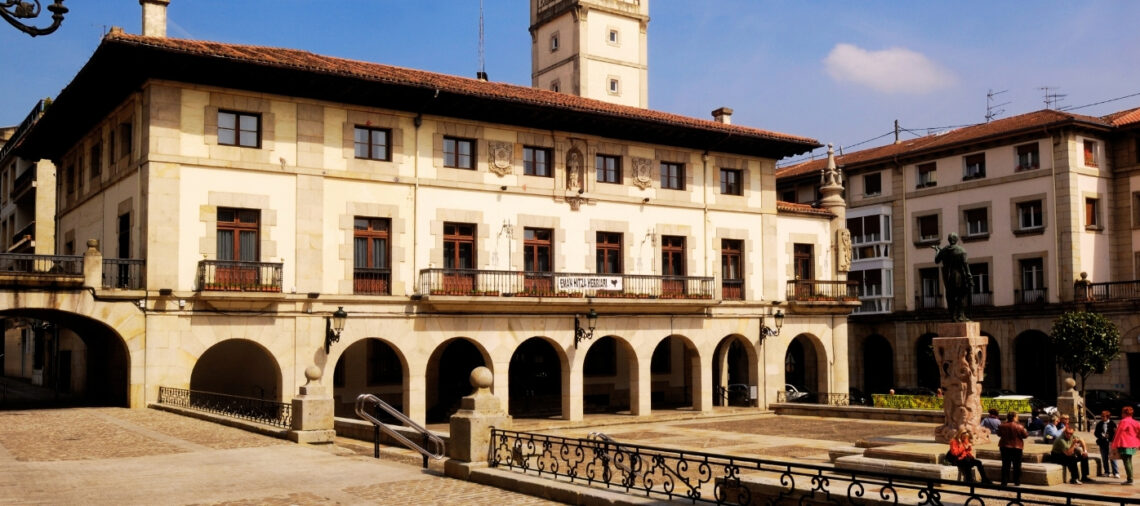Step into a realm where history whispers its solemn truths, inviting you to explore the depths of its significance. As you embark on a journey through the historic town of Guernica (Gernika) in the Autonomous Community of the Basque Country (Spain), you will witness the echoes of a bygone era, a time marked by turmoil and resilience. This timeless relic holds within its walls the stories of the Spanish Civil War, an era of tragedy and upheaval. But beyond its somber past, Guernica also emerges as a symbol of hope and peace, a testament to the indomitable spirit of humanity. As you navigate through the layers of history and emotion that permeate this hallowed ground, you will face a legacy that continues to resonate in our present-day world.
Guernica: A Historical Landmark
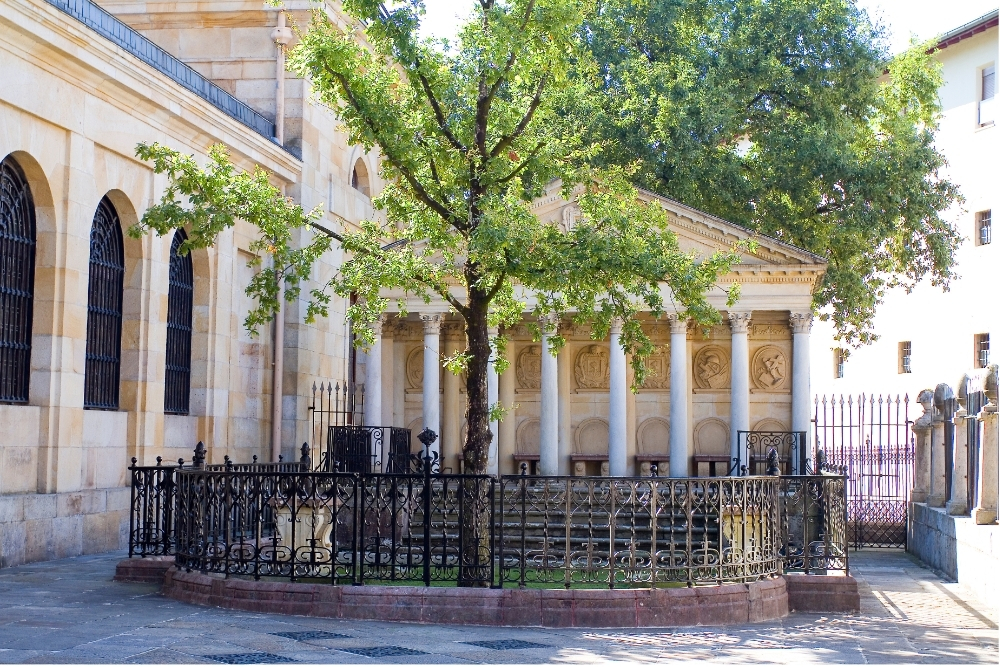
When visiting the historic Guernica, you will encounter a significant landmark with immense historical value. Guernica, located in the Basque region of Spain, is renowned for its historical significance and cultural heritage. The town gained worldwide attention during the Spanish Civil War when German and Italian air forces mercilessly bombed it on April 26, 1937. This devastating event, immortalized by Pablo Picasso’s iconic painting ‘Guernica’, symbolizes the horrors of war and the resilience of the human spirit.
Today, Guernica stands as a stark reminder of the atrocities committed during the war and serves as a symbol of peace and freedom. The town’s historical significance and cultural heritage make it a must-visit destination for those seeking to understand the impact of war on a community and the power of art to convey a powerful message.
The Spanish Civil War: Unveiling the Tragedy
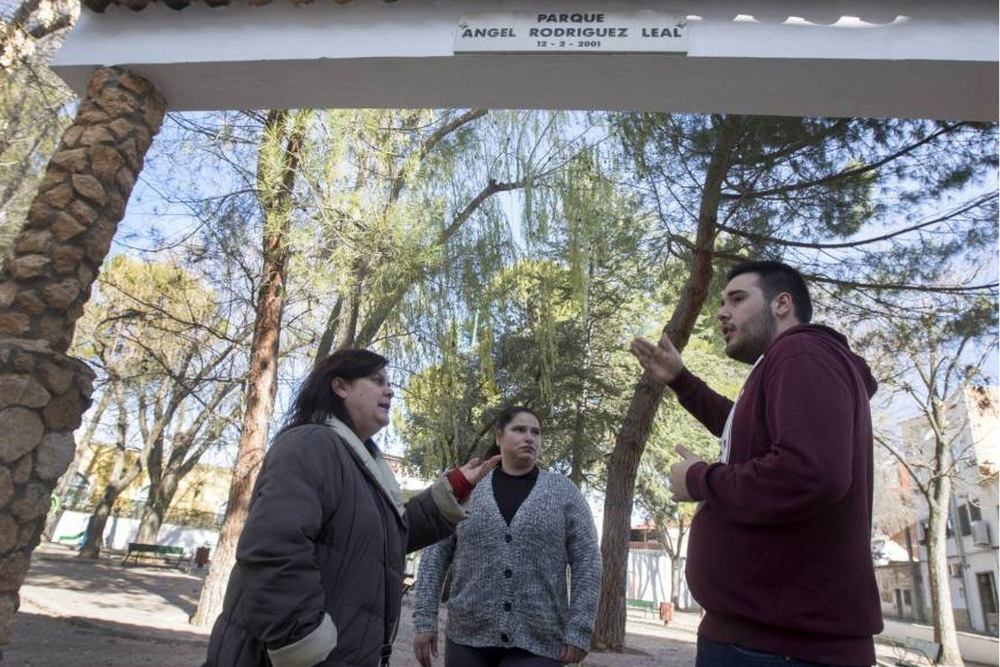
The Spanish Civil War revealed the tragic consequences of political divisions and ideological conflicts in Spain. This devastating conflict, which lasted from 1936 to 1939, tore the country apart and resulted in immense suffering and loss of life. During this time, the world witnessed the uncovering of atrocities committed by both sides of the conflict. The war became a breeding ground for violence, with mass executions, bombings, and widespread destruction becoming a daily occurrence.
These harrowing events left an indelible mark on the nation’s psyche and forever changed the course of Spanish history. The impact of the Spanish Civil War on art was profound, as artists used their creative expression to capture the pain and anguish of the war. Paintings such as Pablo Picasso’s “Guernica” became powerful symbols of the war’s tragedy, reminding us of the horrors of conflict and the importance of peace.
Guernica’s Symbolism: From Destruction to Hope
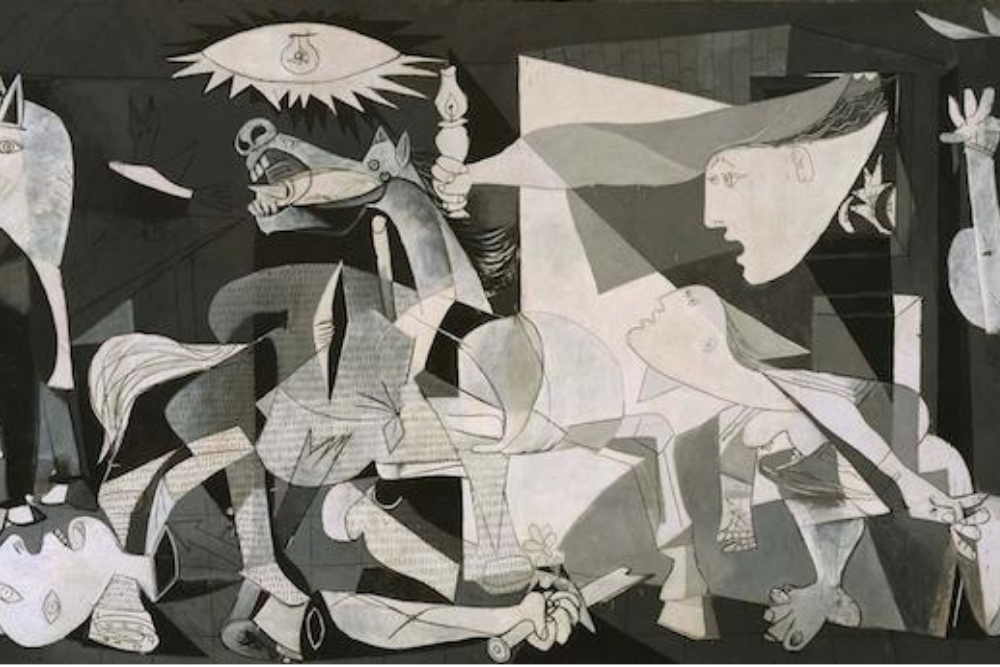
Guernica’s symbolism transcends the destruction of war, offering a glimmer of hope amidst the devastation. This iconic painting by Pablo Picasso captures the horrors of the Spanish Civil War and the impact of destruction on innocent lives. The painting’s power lies in its ability to convey the profound suffering experienced by the people of Guernica while also highlighting the resilience and strength of the human spirit. Picasso’s use of abstract forms and monochromatic color palette creates a sense of chaos and despair, but there are glimpses of hope within this darkness. The intertwined figures, the anguished horse, and the defiant woman with a candle all symbolize resilience and the desire for peace. Guernica stands as a testament to art’s power to provoke thought and inspire change, reminding us that hope can emerge even in the face of destruction.
Exploring Guernica’s Peaceful Transformation
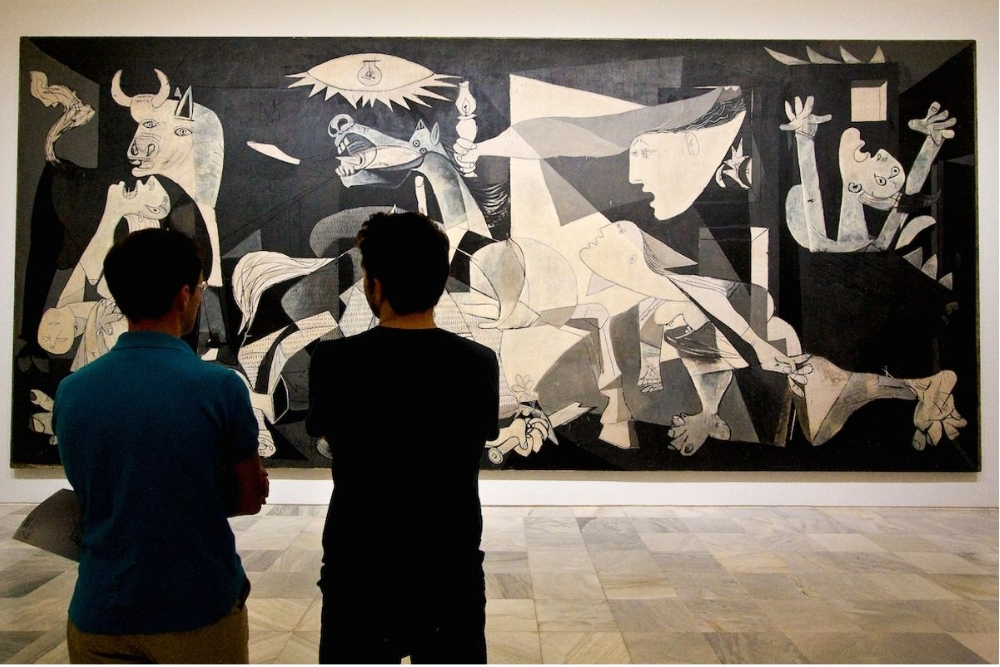
What is the significance of Guernica’s peaceful transformation? Guernica’s art has played a crucial role in the post-war healing and reconciliation process. The painting itself, created by Picasso, serves as a powerful symbol of the horrors of war and the resilience of the human spirit. In the aftermath of the Spanish Civil War, Guernica’s transformation from a war-torn city to a beacon of peace has been a testament to the indomitable nature of its people.
The artwork has acted as a catalyst for healing, allowing individuals to confront the trauma of their past and find solace in the pursuit of peace. Through its vivid and haunting imagery, Guernica’s art has served as a reminder of the importance of unity, understanding, and the power of art to inspire change. Today, Guernica stands as a living testament to the transformative power of art and the human capacity for empathy and healing.
The Present-Day Legacy of Guernica
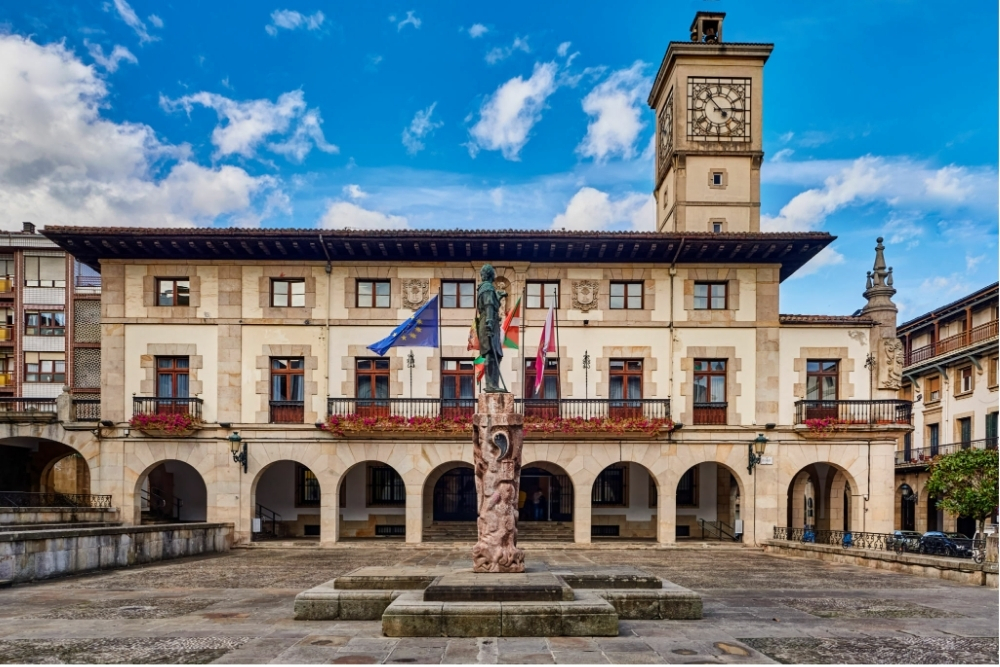
As we explore the present-day legacy of Guernica, it is important to recognize the lasting impact of its peaceful transformation on the local community and the world at large. Guernica’s legacy as a symbol of peace and resilience continues to inspire people today. The town has embraced its history and now promotes itself as a center for art therapy, utilizing the power of creativity to heal and empower individuals affected by conflict and trauma.
Through various art programs and workshops, Guernica provides a safe space for expression and healing. This approach has not only benefited the local community but has also attracted visitors from around the world who seek solace and inspiration in the transformative power of art. Guernica’s legacy serves as a reminder that even in the face of destruction, hope and healing can emerge.
What to visit in Guernica
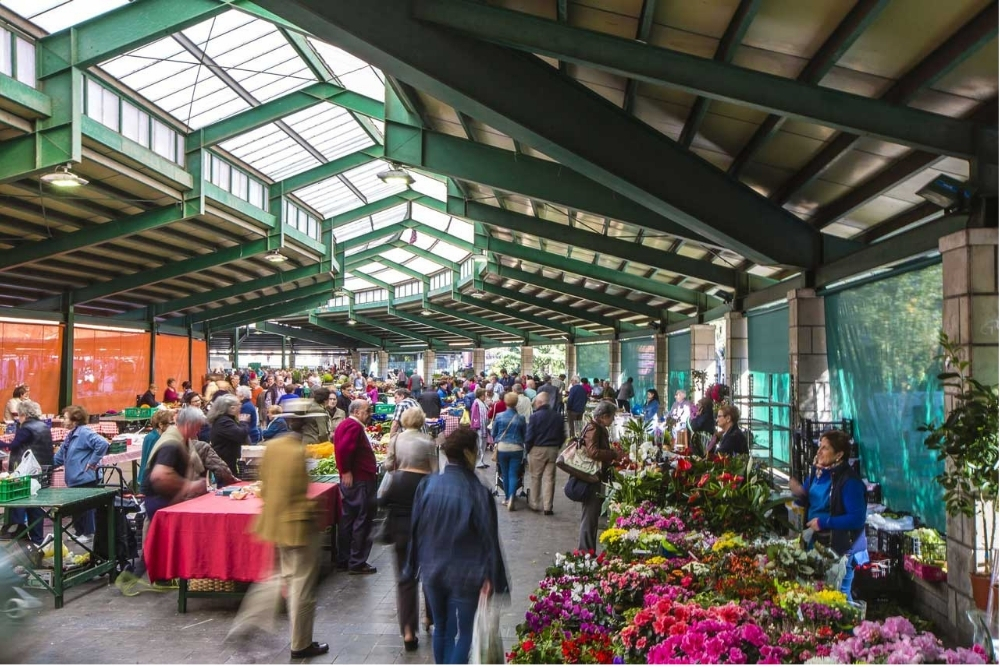
Guernica, a town steeped in history and cultural significance, is a must-visit destination in Spain’s Basque Country. Known globally for its tragic past, especially the 1937 bombing immortalized by Pablo Picasso’s famous painting, Guernica offers a deeply moving experience for visitors.
1. The Gernika Peace Museum Foundation: This museum is a central attraction, offering insights into the town’s historical and cultural significance. The exhibits focus on peace, human rights, and the consequences of war, with a special emphasis on the 1937 bombing. The museum’s narrative threads the past and present together, promoting a message of peace and reconciliation.
2. The Assembly House and the Tree of Gernika: The Assembly House, or Casa de Juntas, is a symbol of Basque governance and traditions. The highlight here is the Tree of Gernika, an oak under which the Lords of Biscay swore to respect the Basque laws. This tree has become a symbol of Basque freedom and autonomy.
3. The Market of Guernica: Held every Monday, this bustling market is a great place to experience local life. Visitors can browse through a variety of stalls selling everything from fresh produce to traditional Basque handicrafts.
4. Murals and Public Art: The streets of Guernica are adorned with murals and sculptures that reflect its history and culture. Notable among these is the large mural reproduction of Picasso’s “Guernika,” which interprets the horrors of the bombing and the resilience of the people.
5. The Churches of Santa Maria and Santa Eufemia: These churches showcase the region’s architectural heritage. The Church of Santa Maria is particularly noteworthy for its intricate Gothic design and historical significance.
6. Surrounding Natural Landscapes: The town is surrounded by the lush landscapes of the Basque Country, offering opportunities for hiking and nature walks. The Urdaibai Biosphere Reserve nearby is a UNESCO World Heritage Site known for its rich biodiversity.
Conclusion about visiting the town of Guernica
In conclusion, visiting the historic Guernica is an emotional journey that unveils the tragedy of the Spanish Civil War and the transformative power of hope. Like a phoenix rising from the ashes, Guernica symbolizes the resilience of the human spirit and the pursuit of peace. As you walk through its peaceful streets today, you can’t help but be reminded of the enduring legacy of Guernica and its powerful message of unity and healing.

